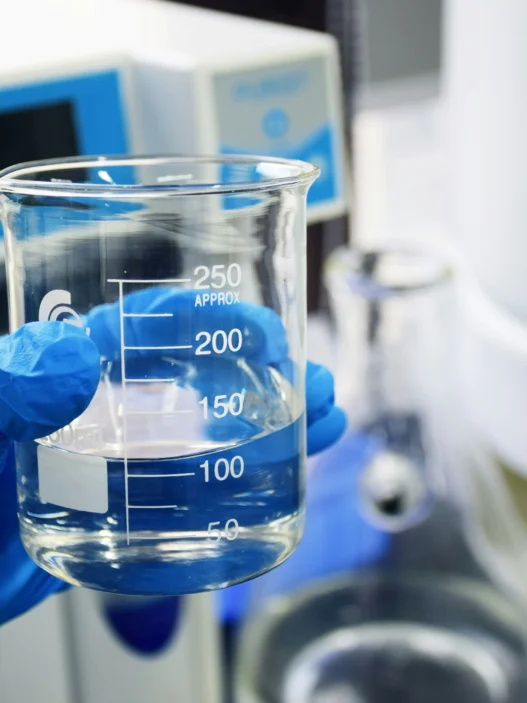S-1,2-Propanediol, also known as Propylene Glycol, is a colorless, odorless liquid commonly used in a variety of everyday products. It is a key ingredient in cosmetics, pharmaceuticals, food, and beverages, as well as in antifreeze and de-icing solutions. With its ability to retain moisture and act as a solvent, S-1,2-Propanediol plays a crucial role in enhancing the effectiveness and stability of these products, ultimately improving their quality and shelf-life. Its versatility and wide range of applications make it a valuable component in various consumer goods, making it an essential substance with significant relevance to everyday life.
Table of Contents:
- 💡 Commercial Applications
- ⚗️ Chemical & Physical Properties
- 🏭 Production & Procurement
- ⚠️ Safety Considerations
- 🔬 Potential Research Directions
- 🧪 Related Compounds
💡 Commercial Applications
S-1,2-Propanediol, also known as propylene glycol, finds widespread commercial and industrial applications due to its excellent solvent properties and low volatility. It is commonly used as a solvent in various products such as pharmaceuticals, cosmetics, and food additives. Additionally, it serves as a humectant, preservative, and stabilizer in a variety of products.
In the pharmaceutical industry, S-1,2-Propanediol is utilized as a carrier solvent in many medications, including oral, topical, and injectable formulations. Its ability to dissolve a wide range of active pharmaceutical ingredients makes it an ideal choice for drug delivery systems. Furthermore, its low toxicity and compatibility with various excipients make it a preferred choice for formulating both liquid and solid dosage forms.
In addition to its role in pharmaceuticals, S-1,2-Propanediol has various medical applications, ranging from use in intravenous medications to topical preparations. It can serve as a vehicle for delivering drugs topically to the skin, enhancing their absorption and efficacy. Its non-irritating nature makes it suitable for use in dermatological products, such as creams, lotions, and ointments.
⚗️ Chemical & Physical Properties
S-1,2-Propanediol appears as a colorless liquid with a slight odor. It is commonly used in the production of cosmetics, pharmaceuticals, and food additives due to its chemical properties.
The molar mass of S-1,2-Propanediol is approximately 76.09 g/mol, with a density of about 1.036 g/cm³. Compared to common food items, such as sugar or salt, S-1,2-Propanediol has a higher molar mass and density.
The melting point of S-1,2-Propanediol is around -50°C, while its boiling point is approximately 188°C. These values are higher compared to common food items like water or olive oil.
S-1,2-Propanediol is highly soluble in water and has a low viscosity. When compared to common food items like sugar or salt, S-1,2-Propanediol exhibits higher solubility in water and lower viscosity levels.
🏭 Production & Procurement
S-1,2-Propanediol, commonly known as propylene glycol, is primarily produced through the hydration of propylene oxide. This process involves reacting propylene oxide with water under controlled conditions to yield S-1,2-Propanediol. The reaction is typically carried out in specialized equipment and requires careful monitoring of temperature and pressure to ensure optimal yield.
Once S-1,2-Propanediol is produced, it can be procured from chemical manufacturers or distributors who specialize in handling and transporting bulk chemicals. The compound is commonly stored and transported in large tanks or drums to maintain its integrity. Transportation of S-1,2-Propanediol typically occurs via tank trucks or tank cars, with strict adherence to safety regulations to prevent leaks or spills during transit.
S-1,2-Propanediol is widely used in various industries, including pharmaceuticals, cosmetics, and food. It is commonly available for purchase from chemical suppliers in both liquid and solid forms, depending on the specific application. The compound can be procured in various quantities, ranging from small containers for laboratory use to bulk quantities for industrial applications. Overall, the production and procurement of S-1,2-Propanediol play a crucial role in supporting the diverse applications of this versatile compound in various industries.
⚠️ Safety Considerations
Safety considerations for S-1,2-Propanediol, also known as propylene glycol, include its potential for skin and eye irritation. It is important to handle this chemical with care to avoid contact with the skin or eyes. Additionally, S-1,2-Propanediol should be stored in a cool, dry, well-ventilated area away from heat sources and incompatible substances to prevent any accidents or reactions.
Hazard statements for S-1,2-Propanediol include “Causes skin irritation” and “Causes serious eye irritation.” These statements highlight the potential risks associated with this chemical when it comes into contact with the skin or eyes. It is important to take necessary precautions to protect oneself from these hazards, such as wearing appropriate personal protective equipment when handling S-1,2-Propanediol.
Precautionary statements for S-1,2-Propanediol include “Wash hands thoroughly after handling” and “Wear protective gloves/eye protection/face protection.” These statements emphasize the importance of practicing good hygiene and using protective equipment to minimize the risks associated with this chemical. By following these precautions, individuals can ensure their safety when working with S-1,2-Propanediol.
🔬 Potential Research Directions
One potential research direction for S-1,2-Propanediol is exploring its applications as a green solvent in organic synthesis. Its unique properties, such as high solvating power and low toxicity, make it an attractive alternative to traditional solvents.
Another area of interest could be investigating the potential use of S-1,2-Propanediol as a building block in the synthesis of biodegradable polymers. Its biocompatibility and ability to undergo polymerization reactions could lead to the development of sustainable materials with a wide range of applications.
Furthermore, research could focus on the potential health benefits of S-1,2-Propanediol, such as its antioxidant properties and potential use in pharmaceutical formulations. Studying its interactions with biological systems could provide valuable insights into its therapeutic potential and potential uses in the medical field.
🧪 Related Compounds
One compound similar to S-1,2-Propanediol is R-1,2-Propanediol. This compound is a stereoisomer of S-1,2-Propanediol and has the same molecular formula (C3H8O2) but a different arrangement of atoms in space. R-1,2-Propanediol may exhibit different physical and chemical properties compared to S-1,2-Propanediol due to its different stereochemistry.
Another similar compound to S-1,2-Propanediol is 1,3-Propanediol. This compound has the same number of carbon, hydrogen, and oxygen atoms as S-1,2-Propanediol but has a different arrangement of atoms in the molecule. 1,3-Propanediol may have different physical and chemical properties due to its different structural arrangement compared to S-1,2-Propanediol.
Additionally, S-1,2-Propanediol is structurally similar to ethylene glycol and diethylene glycol. Although these compounds have different chain lengths, they share a similar molecular structure with S-1,2-Propanediol. Ethylene glycol and diethylene glycol may exhibit properties similar to S-1,2-Propanediol in certain applications due to their structural similarities.




